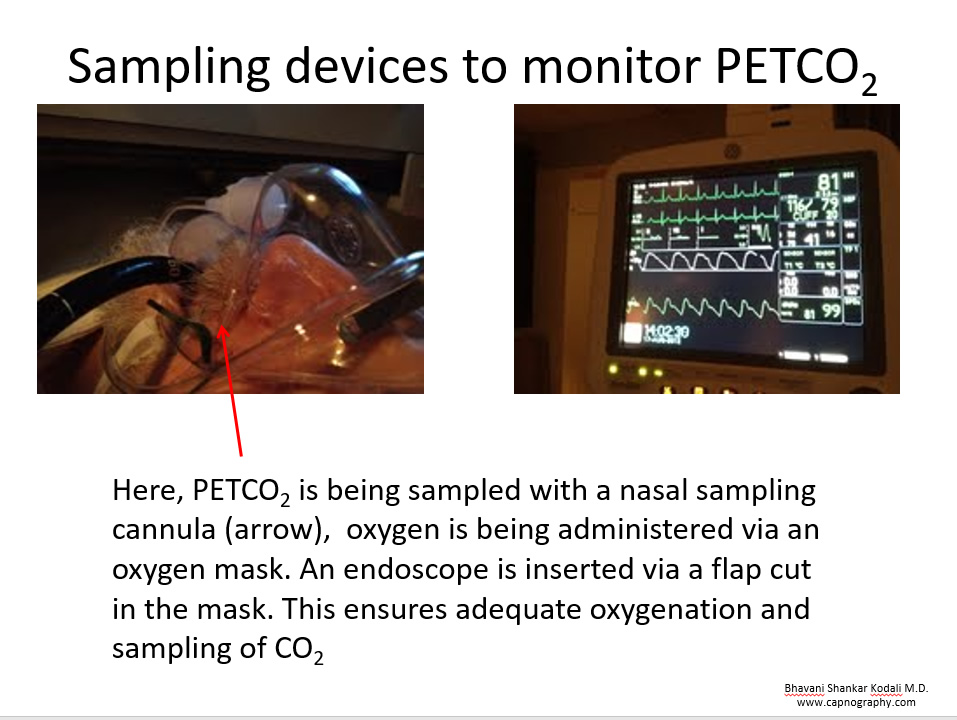Challenges of monitoring ventilation with capnography
There are few challenges encountered in obtaining effective benefits of capnography during sedation. Nonetheless the challenges are surmountable with understanding of principles of capnography. The challenges include difficulties in sampling of expired gases, interpretation of capnograms, training personnels and economic impact related to equipment and disposables.
Using capnography during sedation requires proper understanding and training. Many clinicians doubt the accuracy of capnography for sedation monitoring. It is not the quantitative numbers of capnography that are important during sedation. It is the qualitative difference between pre- and during sedation that should be considered in assuring child safety during sedation. However, if the clinician can obtain excellent and accurate quantitative data in each case, it should be considered as bonus.
- There are several sampling devices designed to obtain reliable CO2 sampling during sedation from the nose, or the mouth. A device should be chosen based on the needs of the sedation procedure. Many devices allow oxygen to be administered while simultaneously monitoring CO2. Use the device that one is familiar and suitable for the procedure.
- A child may not allow the device to be placed when awake. Therefore, the device can be placed after initiation of sedation and adjusted accordingly.
- There is a cost for monitoring CO2. Each sampling device is disposable and cost between 1 to 6 dollars, but is essential to monitor ventilation during sedation and avoid a preventable morbidity.
- Accuracy of CO2 readings is variable and therefore qualitative differences between pre- and during sedation determine the depth of the sedation. The shape of capnogram is extremely important in these circumstances.
- Even in unreliable sampling the CO2 is important, as it warns the clinician to exercise caution while sedating the patient. It emphasizes the need to be extra alert and watchful.
- Blockage of sampling tubes, or water traps, should be monitored. Regular change of water traps is important as they capture the moisture from entering the measuring chamber of the capnograph.
- A delay in sampling of CO2 in side stream capnography during sedation is of no clinical importance in many cases. This assumes importance when the capnography instrument is outside the sedation room, such as MRI. The delay can be calculated based on the length of the tube and sampling rate of the capnograph. A pump aspirates the sample at 50 to 150 ml/min depending on the manufacture of the device. In many clinical practices, the duration of the delay is not significant enough to deduct apnea.
- How to confirm if the capnograph system is functional: If a doubt arises about the functionality of capnograph, easiest confirmatory method is to flow one’s own expired sample into the sampling line and obtain an ETCO2 of 35 to 40 mm Hg with good waveform.
The accuracy of CO2 sampling can be improved by sampling expired gases with a nasal cannula while administering oxygen by a mask. There are many devices available commercially to improve sampling of expired gases while simultaneously providing oxygen to the patient.

Next to How do you use capnography during sedation – Bhavani Kodali’s algorithm

 Twitter
Twitter Youtube
Youtube










